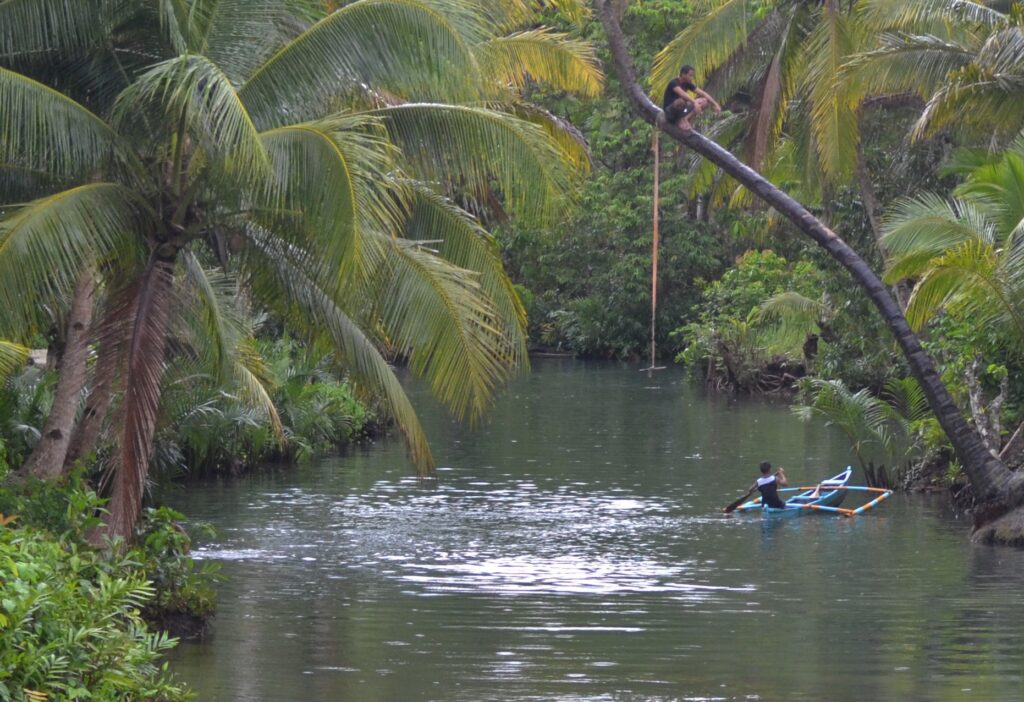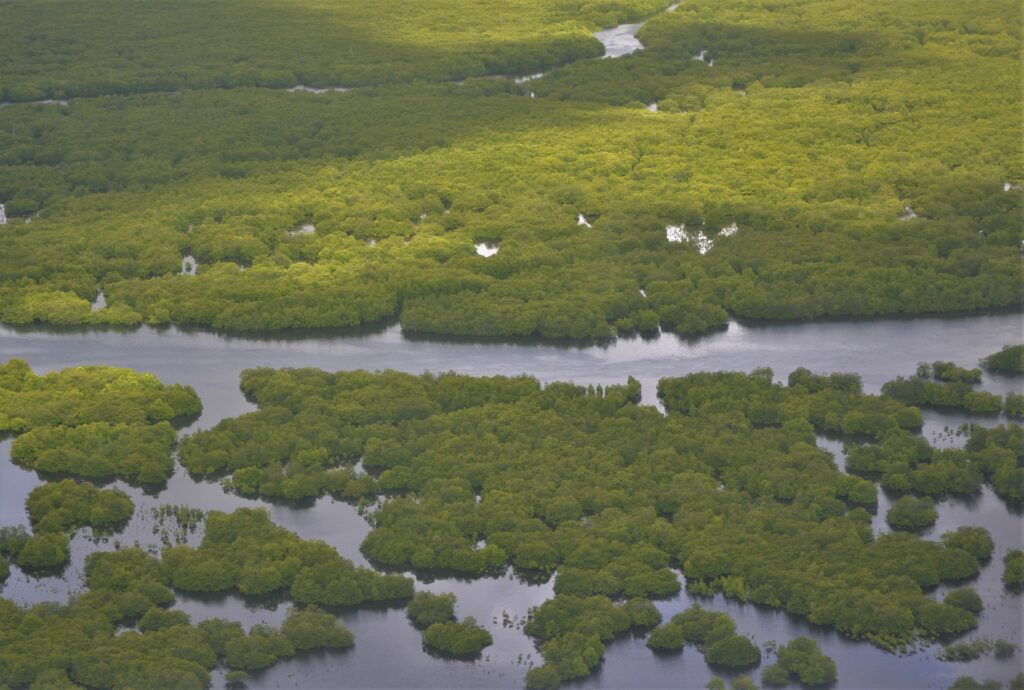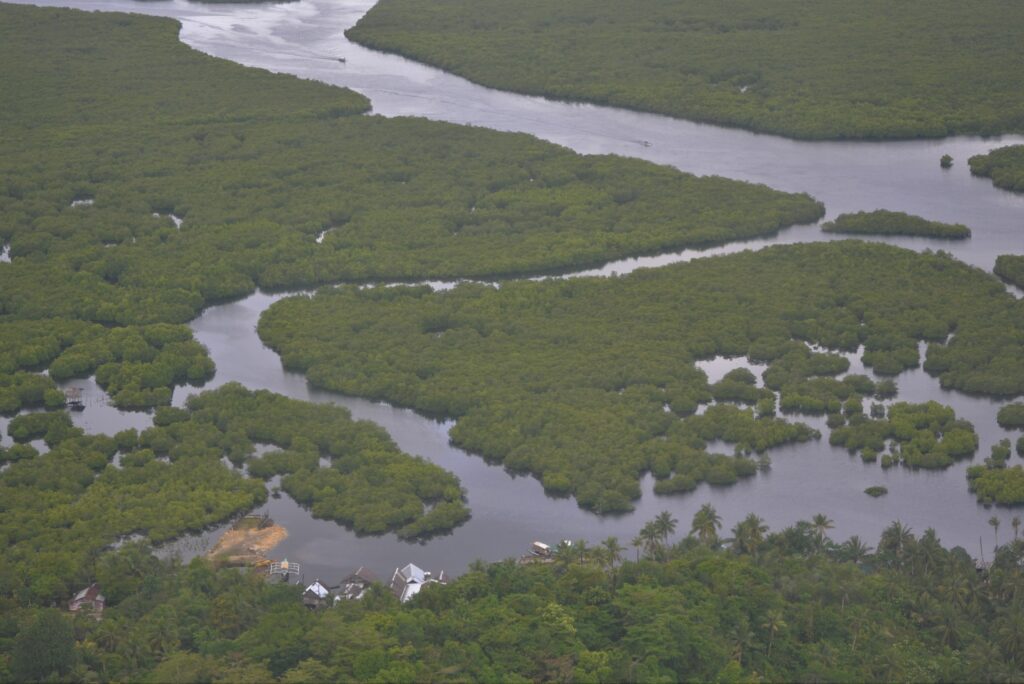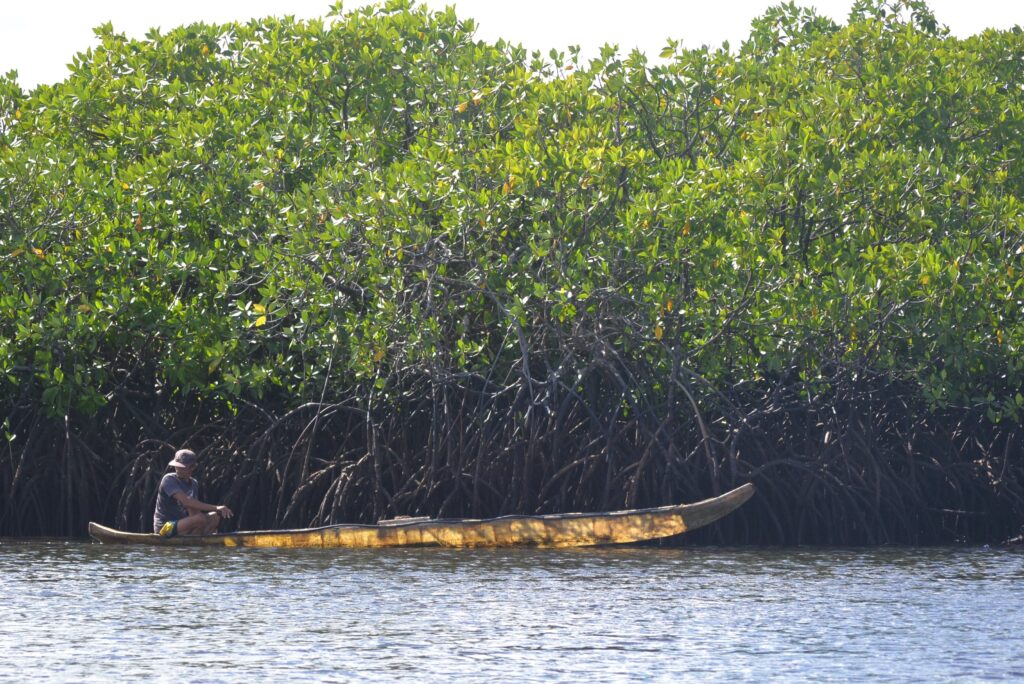WATER RESERVOIR WETLANDS MUST BE MANAGED PROPERLY
Text and Photos by Henrylito D. Tacio
“If managed properly, inland wetlands can serve as natural water reservoirs,” said Dr. Theresa Mundita S. Lim, executive director of the Laguna-based ASEAN Centre for Biodiversity (ACD). “Most especially during rainy seasons, these ecosystems recharge groundwater and provide sustainable surface water supply. The water coming from these natural reservoirs serve various purposes at individual and societal levels.”
She said those words during World Wetlands Day, which is celebrated every second day of February. It was on this day the Ramsar Convention Center on Wetlands, a treaty ratified by 170 countries to protect wetlands and promote their wise use, was adopted.

This year’s theme is “Water and Wetlands,” thus putting a spotlight on the vital role of wetlands ecosystems “in our everyday lives and well-being, particularly in meeting our water needs,” Lim said, adding that “access to clean water has always been a concern across the globe.”
Among the Southeast Asian countries, the Philippines ranks second the lowest in terms of per capita water availability per year with only 1,907 cubic meters, according to the Washington, D.C.-based World Resources Institute.
In a study done by the Japan International Cooperation Agency, nine major cities were identified as “water critical areas.” These were Angeles, Bacolod, Baguio, Cagayan de Oro, Davao, Iloilo, Metro Cebu, Metro Manila, and Zamboanga. “All these major cities, except Angeles and Iloilo, show a water supply deficit until 2025,” the study said.
In this time of coronavirus disease 2019 (COVID-19) pandemic, “this issue is even more timely as clean water is necessary for ensuring proper hygiene, public health, and safety,” Lim pointed out.
A report released by the Geneva-based World Health Organization (WHO) in December last year said that 1.8 billion people in the world lacked basic water services in health care facilities.
Members of the Association of Southeast Asian Nations (ASEAN) are “keeping up with the global aim of providing access to drinking water to all, with the average reaching 83.8% of the population in 2018.” This was stated in the ASEAN Sustainable Development Goals Indicators Baseline Report 2020.
“It remains concerning, however, that millions of people are still without access to clean and safe water, and the threat of water insecurity still looms,” Lim said in a statement. “This is worsened by extreme weather conditions brought about by climate change, such as prolonged dry season resulting in drought and water shortage.”

Lim urged that the role of wetland ecosystems as natural solutions to the crisis “to be widely recognized.”
She said that in the ASEAN region, inland waters and wetlands occupy close to 2 million square kilometers and comprise 60% and 42% of the world’s tropical peatlands and mangrove forests, respectively.
“Now more than ever, we need a whole-of-community and integrated approach in sustainably managing and conserving our remaining wetlands, with recognition of the relationship between water security, public health, and well-being,” Lim said.
Paul A. Keddy, author of Wetland Ecology: Principles and Conservation, defines a wetland as “an ecosystem that arises when inundation by water produces soil dominated by anaerobic processes which, in turn, forces the biota, particularly rooted plants, to adapt to flooding.”
A patch of land that develops pools of water after a rainstorm would not be considered a “wetland,” even though the land is wet. Specifically, wetlands are characterized as having a water table that stands at or near the land surface for a long period each year to support aquatic plants.
Under the Ramsar Treaty, wetlands are defined as follows:
Article 1.1: “… wetlands are areas of marsh, fen, peatland or water, whether natural or artificial, permanent or temporary, with water that is static or flowing, fresh, brackish or salt, including areas of marine water the depth of which at low tide does not exceed six meters.”
Article 2.2: “(Wetlands) may incorporate riparian and coastal zones adjacent to the wetlands, and islands or bodies of marine water deeper than six meters at low tide lying within the wetlands.”
In simpler terms, wetlands occur where water meets land. They include mangroves, peatlands and marshes, rivers and lakes, deltas, floodplains and flooded forests, rice-fields, and even coral reefs.
In the Philippines, there are six wetlands of international importance; these are Agusan Marsh Wildlife Sanctuary in Mindanao, Naujan Lake National Park in Oriental Mindoro, Olango Island Wildlife Sanctuary in Cebu, Puerto Princesa Subterranean River National Park in Palawan, the Tubbataha Reefs Natural Park in Sulu Sea, and the Las Piñas-Parañaque Critical Habitat and Ecotourism Area.
Peatlands, also known as mires, have been confirmed in Sab-a basin in Leyte and Agusan March in Mindanao. There are also some reports that peatlands also exist in Ligawasan Marsh in Mindanao, Dolongan area in Basey, Samar, Southern Leyte, Mount Pulag in Northern Luzon, Surigao del Norte, Northeastern Mindanao, and Naujan Lake Marshland.

The Biodiversity Management Bureau (BMB) states the first basic function of wetlands is that they ensure freshwater for all people. “Wetlands provide us with drinking water,” it points out.
Wetlands also filter harmful waste from water. “Eighty percent of wastewater is discharged into the natural environment without any form of treatment,” says BMB, a lune agency of the Department of Environment and Natural Resources (DENR). “The abundant plant life in wetlands absorbs waste, which helps purify water.”
Unknown to many, wetlands are nature’s shock absorbers. “Wetlands are a natural buffer during extreme weather. They store heavy rainfall during storms, which reduces flooding and delays the onset of droughts,” BMB states.
Take the case of mangroves. “Mangroves act as natural barriers in coastal areas, protecting communities from storm surges, waves, tidal currents, and typhoons,” said Dr. Alice Joan G. Ferrer, a professor of the Division of Social Sciences at the University of the Philippines in Miag-ao, Iloilo.
Some scientific studies have shown that “a barrier of mangroves over 100 meters wide can reduce wave height by between 13% and 66%.” In addition, “a per kilometer width of mangroves can weaken storm surge by 5-50 centimeters and surface wind waves by more than 75%.”
The wetlands are very important when it comes to biodiversity. “Wetlands are home to more than 100,000 freshwater species,” BMB says. “They are essential for many amphibians, reptiles, and migratory birds.”
Ornithologist Arne Jensen, who heads the records committee of Wild Bird Club of the Philippines (WBCP), told Philippine Daily Inquirer: “Birds that live in wetlands or spend some time of their life in wetlands, are about 150 species or 22 percent of the Philippine avifauna. Most waterbird species have adapted to the drastically changing conditions of wetlands through their migratory behavior.”
Wetlands also guarantee food supply. “Wetlands provide important food products like fish and rice,” BMB says. Fish and rice are the country’s staple food.
Wetlands may also be important sources of renewable energy. “Lake Lanao, the second largest lake in the country and one of the 15 ancient lakes in the world, helps generate 70% of the electricity for domestic use in Mindanao,” Lim reported.
The role of wetlands when it comes to the problem of climate change cannot be ignored as they store carbon. “Peatlands alone hold 30% of all carbon stored on land,” it says. “This is twice the amount stored in the world’s forests, providing resilience against climate change.”

Despite their myriad uses, wetlands are not given much prominence. They are neglected and not given importance. “Encroachment on, or loss of, wetlands can cause serious environmental damage to the ecosystem, so they should be restored and rehabilitated when possible,” the environment department suggested.
Wetlands should be conserved through “wise use,” which Ramsar Convention defines as “the maintenance of their ecological character, achieved through the implementation of ecosystem approaches, within the context of sustainable development.”
In the Philippines, the government is doing something to save vanishing wetlands. “There are efforts to recover degraded wetlands, such as the ones in Boracay Island, which are joint activities of the government and the private sector,” Lim said.
“We are happy to see important progress in our efforts,” the ACD head stressed. “But if we continue to take our wetlands for granted and lose crucial biodiversity in the process, it will certainly affect our ability to effectively respond to an impending global water crisis.
“Amid these difficult times, we need not look elsewhere for solutions; they are right in nature,” Lim concluded.

